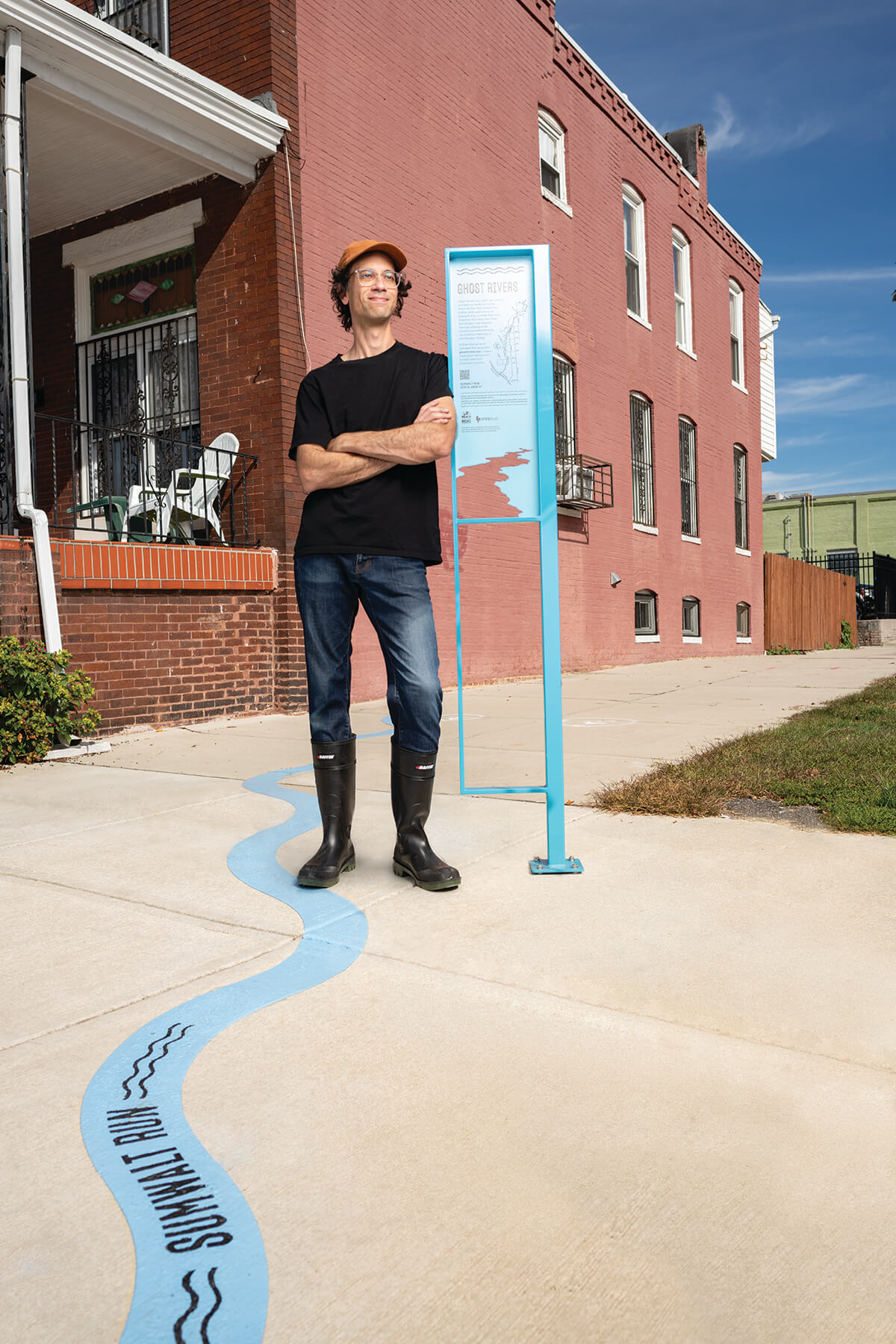Arts & Culture
New ‘Ghost Rivers’ Public Art Installation Honors a Long-Lost Landscape in Remington
In hopes of bringing forgotten history back to the surface, Bruce Willen's self-led walking tour follows the original path of the Sumwalt Run.

It’s a few dozen steps down the north slope of the Wyman Park Dell near Charles Village. Upon the descent, the surrounding streets, nearby buildings, and neighboring art museum begin to fade behind a thicket of oak trees, nearly disappearing entirely by the time one reaches the bottom, where, on an early November morning, Bruce Willen stands before the park’s long, low lawn—a sort of sunken oasis in the heart of northern Baltimore City.
“This is the last remnant of the original stream valley,” says Willen, 42, looking around the hillside, speckled with picnics, a playground, and people out walking their dogs. “It’s mind-boggling to imagine, but where we’re standing, right under this walking path, is where it still runs today.”
He’s referring to the Sumwalt Run, a rocky stream that flowed openly from 31st and Charles Streets southwest to the Jones Falls River a century and a half ago. In the early 1900s, the city buried it into underground tunnels—the surrounding land filled in or flattened to build the roads, rowhomes, and neighborhoods we now recognize today.
It’s just one of some estimated 40 waterways that once coursed throughout the city but are now hidden both out of sight and mind. And this one, in particular, has been a wellspring of inspiration for Willen, an Old Goucher resident, Maryland Institute College of Art graduate, and multidisciplinary designer, whose public art installation, Ghost Rivers, was permanently installed throughout Remington last fall.
The mile-and-a-half, self-led walking tour shadows the Sumwalt’s original path—just follow the bright blue lines painted with thermoplastic across streets and sidewalks between 12 decorative, historically detailed metal signs. Funded by various grants, it will be maintained by Willen and the Greater Remington Improvement Association, with materials chosen for durability.
“This project has changed the way that I look at the city,” says Willen, who co-founded the Post Typography design studio, has performed in local bands such as Peals and Double Dagger, and whose other recent installations include the Library of Lost Gloves and Lost Loves at Druid Hill Park. “Now when I walk or drive around town and I see a low point in the landscape, I think, ‘Oh, there’s a stream under there…’”
Willen discovered the Sumwalt on an old city map about decade ago. But it wasn’t until the COVID-19 pandemic that a stroll over one storm drain on Lorraine Avenue reminded him—with an audible wssshhh—on what is now Site 8 of the Ghost Rivers tour.
“It was exciting, hearing the ghosts of the river, whispering up to me,” says Willen, who spent the next three years conducting research while meeting with city agencies, community organizations, and local residents, who were all equally enthused. “Very few knew about the stream. It’s easy to have no idea it was ever here.”
He hopes Ghost Rivers can bring that forgotten history back to the surface, while also adding context to the conversation. The more he studied the Sumwalt, the more he realized that its story, much like the waterway itself, intersected with an ecosystem of others—industry, immigration, climate—as shifts took place in both the natural and manmade environments.
This stream, for instance, was once frequented for recreation, dammed for agriculture, and harvested for commercial ice during once-consistently cold winters. As populations grew, sewage and stormwater systems were constructed for public health, with these tributaries enlisted as their main channels.
“The histories all weave together,” says Willen. “I hope that this project might inspire someone walking down the street to imagine the space they’re in, even if only for 20 seconds, in a slightly different way.”
And that could include the city at large, which was built around its Inner Harbor and Jones Falls, now buried under a deteriorating I-83, where one of Willen’s last three sites will be completed this spring, and where advocates have joined the growing nationwide call for municipalities to “daylight” these waters.
“Do we want to spend billions to rebuild a highway that cut the city in half,” poses Willen, “or do we want to create an opportunity to reconnect?”